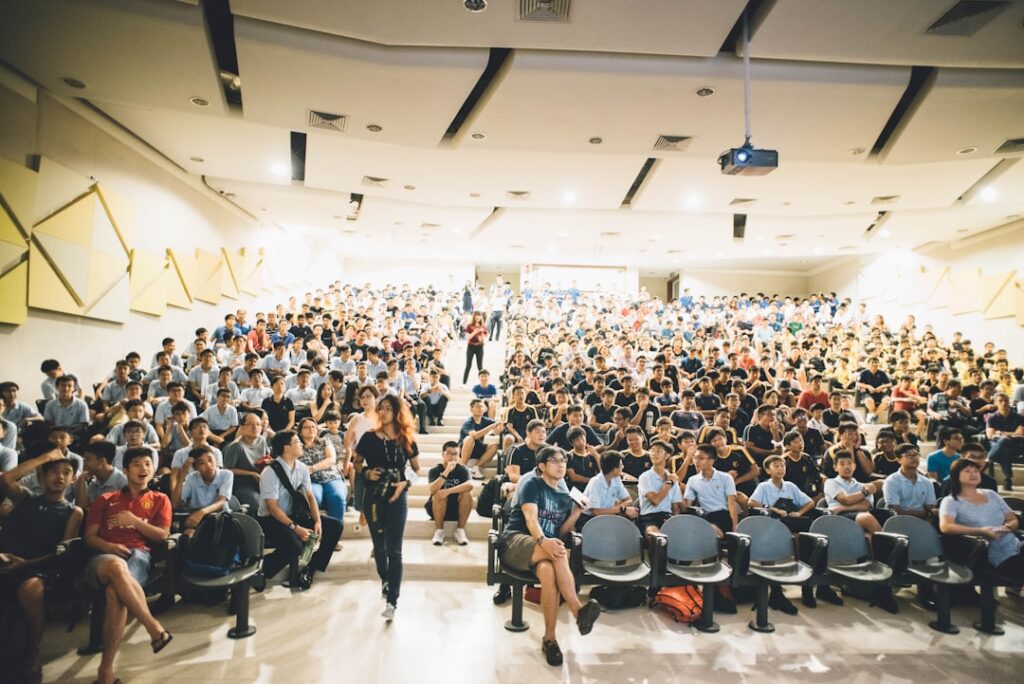It is a multifarious and vital role that drives sustainable development efforts as a representative of Sustainable Development Initiatives (SDI). First off, by promoting sustainable practices & policies at the local, national, & international levels, the SDI representative acts as a catalyst for change. In order to promote sustainable development goals & initiatives, this entails interacting with businesses, communities, and government officials. A crucial part of spreading knowledge about the value of sustainable development and its effects on social, economic, and environmental well-being is also played by the SDI representative.
This entails planning events, seminars, and educational campaigns to encourage people & groups to take up sustainable living. In addition, establishing alliances and working together with different stakeholders—such as non-governmental organizations, educational establishments, and businesses—is the responsibility of the SDI representative. The representative can direct projects and initiatives for sustainable development by leveraging resources & expertise through the formation of strategic alliances. In addition, the SDI representative serves as a point of contact for various industries, encouraging communication & teamwork to tackle interrelated issues like resource management, poverty alleviation, and climate change. All things considered, an SDI representative’s work is crucial to fostering constructive change and a comprehensive strategy for sustainable development.
The concept of sustainable development is intricate and multifaceted, involving environmental, social, and economic aspects. Addressing climate change and its extensive effects on ecosystems, communities, and economies is one of the main challenges. To do this, mitigation and adaptation plans must be put in place in order to lower greenhouse gas emissions, safeguard populations at risk, and increase resistance to extreme weather. Since poverty and inequality are directly related to social injustice & environmental degradation, sustainable development initiatives also need to address these problems. Sustainable development can assist in uplifting marginalized communities and fostering a more just society by encouraging inclusive growth and equitable access to resources.
Also, sustainable development calls for the efficient and responsible management of limited resources like land, energy, and water. Adopting renewable energy sources, conserving resources, and using sustainable land use techniques all need creative solutions. In addition, it is imperative that sustainable development initiatives acknowledge the interdependence of worldwide concerns, acknowledging the interdependence of problems like urbanization, food security, & biodiversity loss. Through comprehension of these intricate problems, interested parties can create comprehensive strategies that take into account the connections between social welfare, economic growth, and environmental sustainability. To advance sustainable development initiatives and make a significant impact, forming alliances & working together is crucial.
| Metrics | Data |
|---|---|
| Number of SDI Representatives | 50 |
| Completion Rate | 80% |
| Number of Sustainable Development Projects Supported | 20 |
| Number of Complexities Addressed | 15 |
Sustainable development initiatives can harness resources, expertise, and influence to tackle intricate challenges by collaborating with a wide range of stakeholders, including government agencies, non-profit organizations, and private sector entities. Partnerships facilitate knowledge exchange and capacity building, enabling disparate actors to gain insights from one another’s experiences & optimal methodologies. Also, creative solutions for sustainable development can be developed through collaborations by bringing together a variety of viewpoints and skill sets. Moreover, collaborations are essential to expanding efforts & projects related to sustainable development. Stakeholders can increase their impact and reach a larger audience by combining resources & coordinating efforts. This is especially crucial when tackling global issues like climate change, where meaningful progress requires coordinated efforts.
Partnerships can also foster unity and mobilize support for sustainable development objectives, presenting a unified front in favor of systemic reforms and policy changes. In general, fostering alliances and teamwork is a calculated move that will propel initiatives for sustainable development and bring about long-lasting transformation. It is crucial to navigate the political and economic aspects of sustainable development in order to break through obstacles and promote significant change. Given that governments are primarily responsible for creating the laws, rules, and incentives that support sustainability, political will and leadership are essential in establishing the framework for sustainable development. This entails interacting with decision-makers to promote sustainable practices and have an impact on regional, governmental, and global decision-making processes. Promoting sustainable business practices and making investments in environmentally friendly infrastructure and technologies are additional aspects of managing economic factors.
Through showcasing the financial advantages of sustainability, like reduced expenses, expanded market potential, and reduced risk, interested parties can encourage private sector participation in sustainable development initiatives. Also, comprehending power relationships and vested interests that might obstruct the advancement of sustainability is necessary for tackling political & economic issues. This entails negotiating intricate stakeholder relationships & promoting inclusive decision-making procedures that take into account the requirements of all parties. In addition, it’s critical to address structural problems that can impede efforts at sustainable development, such as inequality, corruption, and a lack of transparency.
Stakeholders can foster an environment that is conducive to sustainable development by advocating for accountability frameworks and good governance practices. Overall, advancing sustainable development initiatives and fostering an atmosphere that is conducive to positive change require navigating political and economic issues. To address complex issues and advance sustainable development initiatives, creative solutions must be put into practice.
This entails utilizing research, technology, and creativity to create novel strategies that advance social justice, economic prosperity, and environmental sustainability. Innovative approaches to renewable energy, for instance, can improve energy access for marginalized communities and help cut carbon emissions. Progress in agricultural techniques and food systems can also support biodiversity preservation, sustainable land use, and food security. Also, more livable cities with less of an impact on the environment can be created through creative urban planning and transportation solutions. In addition, experimental and learning cultures must be fostered within sustainable development initiatives in order to implement creative solutions. In addition to learning from successes and modifying tactics in light of evidence-based practices, this entails accepting risk-taking and failure as necessary components of the innovation process.
In order to co-create solutions that are inclusive of various viewpoints & contextually relevant, it is also critical to collaborate with a diverse range of stakeholders. Stakeholders can guarantee that solutions are fair and meet the needs of all people by incorporating marginalized groups, indigenous knowledge holders, and local communities in the innovation process. All things considered, advancing sustainable development initiatives & producing beneficial effects depend heavily on the application of novel solutions. To create real change, rally support, & raise awareness, it is imperative that sustainable development goals be communicated and advocated for. This entails developing engaging stories that draw attention to the pressing sustainability issues as well as the chances for progress.
Stakeholders can create momentum for sustainability action by clearly articulating the advantages of sustainable development to a range of audiences, including the general public, businesses, civil society organizations, and policymakers. Also, in order to influence laws, rules, and the distribution of resources toward sustainability, advocates for sustainable development goals must interact with decision-makers. Effective communication also entails utilizing a variety of platforms to reach various audiences with customized messages, including public events, social media campaigns, media outreach, and educational materials. Engaging people in meaningful conversations about sustainability can be achieved by utilizing interactive platforms, data visualization, & storytelling. In order to amplify voices & present a united front for change, supporting sustainable development goals also entails forming coalitions with partners who share similar views. Stakeholders can build a strong movement for sustainability by enlisting the aid of a variety of groups, including policymakers, scientists, youth activists, indigenous leaders, and business executives.
All things considered, raising awareness & promoting action for positive change requires advocating for and communicating the goals of sustainable development. To ensure the success of sustainable development initiatives, hurdles and obstacles must be removed. This entails determining the systemic obstacles that could impede the development of sustainability, such as institutional inertia, vested interests, a lack of resources, and resistance to change.
Gaining insight into these obstacles can help stakeholders devise plans to deal with the underlying issues and establish favorable circumstances for the success of sustainable development. Building resilience within sustainable development initiatives is also necessary for overcoming obstacles so that these initiatives can adjust to unforeseen challenges like natural disasters, political unrest, or economic downturns. Fostering inclusive decision-making processes that take into account various viewpoints and give equity in sustainability initiatives top priority is another important aspect of removing obstacles. Encouraging marginalized communities to engage in decision-making procedures & making sure their opinions are heard when forming agendas for sustainable development are two examples of how to do this.
Developing organizations’ & communities’ capacity to successfully adopt sustainable practices is also necessary for overcoming challenges. To give stakeholders the information and abilities they need to promote positive change, this entails offering mentorship, technical support, and training. In general, overcoming hurdles & impediments is essential to directing sustainable development initiatives toward significant results. In addition, removing obstacles calls for the development of inclusive decision-making procedures that give equity in sustainability initiatives top priority & take into account a range of viewpoints. Encouraging marginalized communities to engage in decision-making procedures and making sure their opinions are heard when forming agendas for sustainable development are two examples of how to do this.
Building organizations’ and communities’ capacity to successfully implement sustainable practices is also necessary to overcome obstacles. To give stakeholders the information & abilities they need to promote positive change, this entails offering mentorship, technical support, and training. Ultimately, if sustainable development initiatives are to have a significant impact, they must overcome a number of challenges. We can create a more effective and inclusive approach to sustainability that is beneficial to all parties by actively involving them and developing their capacity.
If you’re looking for tips on effective communication with the EDD, you may also be interested in this article on connecting with PFL. It offers valuable insights on how to navigate the communication process with the Paid Family Leave program, which could be helpful for anyone working with the EDD.
FAQs
What is an SDI representative?
An SDI representative is a person who represents a company or organization that provides products or services related to Secure Digital Integration (SDI). They are responsible for promoting and selling SDI solutions to potential clients and customers.
What does an SDI representative do?
An SDI representative is responsible for building and maintaining relationships with clients, identifying new business opportunities, and promoting the benefits of SDI solutions. They also provide support and assistance to clients in implementing and using SDI products or services.
What qualifications are required to become an SDI representative?
Qualifications for becoming an SDI representative may vary depending on the company or organization. However, typical qualifications may include a bachelor’s degree in business, marketing, or a related field, as well as experience in sales, customer service, or the technology industry.
What skills are important for an SDI representative?
Important skills for an SDI representative include strong communication and interpersonal skills, sales and negotiation abilities, technical knowledge of SDI products and services, and the ability to build and maintain client relationships.
What industries or sectors do SDI representatives typically work in?
SDI representatives may work in a variety of industries or sectors, including technology, cybersecurity, telecommunications, government, healthcare, finance, and more. Any industry or sector that utilizes SDI solutions may require the services of an SDI representative.



